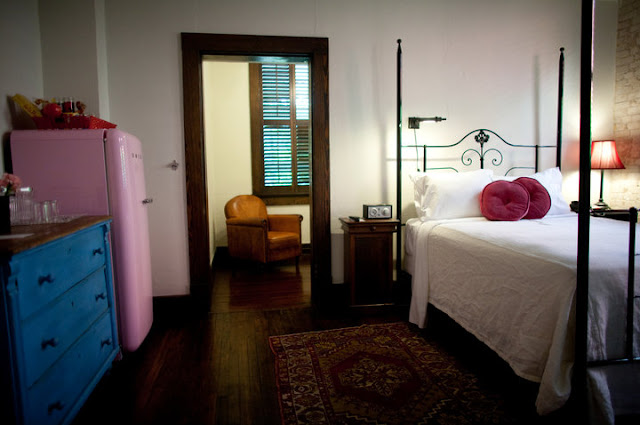Hardwoods
Hardwood is derived from a broad-leafed tree (without needles).
Mahogany is a native to tropical forests. It is either a pinkish or coppery red hue, with dark fine lines to the grain. With age, mahogany becomes a darker color. Furniture made from mahogany became very popular in the mid-18th century. Most notable maker is Chippendale.
Fun Facts
- Mahogany resists wood rot, making it attractive in boat construction.
- It is also used for musical instruments, particularly the backs of acoustic guitars and drum shells because of its ability to produce a very deep, warm tone compared to maple or birch.
- Guitars featuring mahogany in their construction include Martin D-18 and Gibson Les Paul models.
Barclay Butera Mahogany Dresser
Walnut is used as a material for luxury furniture. It is mostly from England. The colors of walnut can vary from a light walnut to a rich golden brown color. There are also special types of walnut including burled (closed scrolling grain), circassian walnut, and American fireside.
- Car manufacturers use black walnut veneer for the interior of their prestige and luxury models.
- Furniture makers consider this wood to be premium material and often create their high-end pieces with it.
Stained walnut
Raw walnut
Walnut on Pine
Oak is the wood most commonly used for finer, more durable furniture. In the 17th century Europe started to use oak to make furniture. It is found in red and white, with red oak being the most popular of the two. It stains well to any color. Solid wood oak furniture is highly sought after and often quite expensive.
- Oak is very resistant to insect and fungal attack because of its high tannin content.
- European and American oak barrels are used to age red wine, sherry, brandy, scotch and bourbon whiskey.
Stained Oak chest
Maple is native to Europe and North America. has a long history of furniture production in the US. It can be stained to have a finish resembling walnut, cherry or other woods. Maple was frequently veneered. Veneering is when thin sheets of a more valuable wood are glued to a less valuable wood.
- Some maple wood has a highly decorative wood grain, known as flame maple, quilt maple, birdseye maple and burl wood. This condition occurs randomly in individual trees of several species, and often cannot be detected until the wood has been sawn, though it is sometimes visible in the standing tree as a rippled pattern in the bark.
- Electric guitar necks are commonly made from maple, because of its harder and brighter sound than mahogany.
- Maple is also used to manufacture wooden baseball bats.
Maple burl with mahogany border
Cherry is used as material for luxury furniture. It gets red when exposed to sunlight. Cherry furniture can be stained, or left natural, taking advantage of the natural beauty of the woods rich red-brown color.
- Most cherry furniture is made from black cherry, a tree that grows along the east coast of the US and is found as far west as the Mississippi river.
- A mature black cherry can easily be identified in a forest by its very broken, dark grey to black bark, which has the appearance of very thick, burnt potato chips.
Barclay Butera Weathered Cherry Nightstand
Louis XV Style Provincial Cherry wood Desk, Circa 1820
Rosewood is often brownish with darker veining, but found in many different hues. It has an exclusive fragrance. It is hard to work upon and takes high polish. Rosewood can easily be confused with mahogany. When you look closely at rosewood you will see fine black or white rings. Rosewood is also heavier than mahogany.
- It is good for making musical instruments, piano cases, tool handles, art projects, veneers, and furniture.
- This wood has a strong sweet smell, which persists over the years, explaining the name "rosewood".
Barclay Butera Rosewood Dresser
Rosewood long credenza
Teak is a hard and moisture- resistant wood. Teak furniture is a very popular type of furniture due to its unique appearance and its incredible ability to withstand the elements. It is not unusual for teak furniture, even outdoor teak furniture, to last 100 years or longer.
- Teak wood is used in many of the mid-century pieces. It's often stained wheat or champagne, but can also be painted.
- Unstained teak will have an olive-brown or yellow-brown color and eventually, especially if used outdoors, develop a beautiful silver patina.
Pierre Jeanneret Caned Teak Easy Chair
Softwoods
Softwoods come from needle-bearing evergreen trees and are preferred for intricately carved pieces. Softwoods are more susceptible to marks and dings, but this can often result in an appealing weathered quality.
Pine is usually light-yellow in color and ideal for beach cottages or anywhere you’d like a lighter feel. Pines are among the most commercially important of tree species. The industrial revolution of the 18th and 19th centuries witnessed the origin of pine furniture for the masses, who could not afford oak furniture that was expensive and not everyone could pay for it. Pine was frequently used to make furniture that was intended to be painted or veneered.
- There are about 115 species of pine, including the Christmas tree!
- Because pines don't have insect or decay-resistant qualities after logging, they are generally recommended for construction purposes as indoor use only
Redwood is red in color with distinct growth rings, lighter in weight than many woods. The burl is particularly striking with distinct eye like patterns. Its resistance to moisture makes its valuable for use in outdoor furniture and as exterior shingles, and the burl is often used as veneer.
- Redwood trees can live for hundreds to thousands of years.
- Redwood is native to California; California is a main producer of redwood furniture.
Spruce is a strong wood that finishes well, but when left outside can not be expected to last more than 12–18 months depending on the type of climate it is exposed to.
- It is used in many musical instruments, including guitars, mandolins, cellos, violins, and is the soundboard of a piano.
- Hard to find as furniture.
Cedar is a reddish wood with sweet odor. It grows all over the world including California, Japan, Taiwan, Australia, and Mexico. Cedar is markedly more affordable than most other types of wood.
- It is bacterial and fungal resistance.
- Cedar is 80% the strength of Oak, making it desirable to use for outdoor furniture.
Stained red Cedar
So its really hard to tell what type of wood furniture is. It takes someone who has been working with furniture for a long time. I thought it'd be fun to get down the basics, but there's definitely a lot more to this than what meets the eye!
One article I found especially helpful sourced a book, Field Guide to American Antiques, by Joseph T. Butler. It gave a context chart of what you can expect to be the norm when antique furniture shopping. More information can be found here.
A. 17TH CENTURY - Oak
B. WILLIAM AND MARY - Walnut
C. COLONIAL- Indigenous Woods, Maple, Oak, Walnut, Cherry
D. EARLY QUEEN ANNE - Walnut
E. LATE QUEEN ANNE – Mahogany
F. WINDSOR – Oak, Ash, Pine
G. CHIPPENDALE - Mahogany
H. FEDERAL - Mahogany, Cherry, CurlyMaple
I. EMPIRE - Mahogany
J. VICTORIAN:
a. GOTHIC – Mahogany
b. ELIZABETHAN – Mahogany
c. ROCOCO – Walnut, Rosewood
d. RENAISSANCE REVIVAL – Walnut
e. EASTLAKE – Walnut, Oak, Chestnut
f. COLONIAL REVIVAL/CENTENNIAL - Mahogany, Walnut
K. ARTS & CRAFTS/MISSION – Oak
L. ART NOUVEAU – Walnut
M. ART DECO/ART MODERNE – Walnut, Maple
Happy Friday!
Tara
Library in Dallas Home. Source





















































